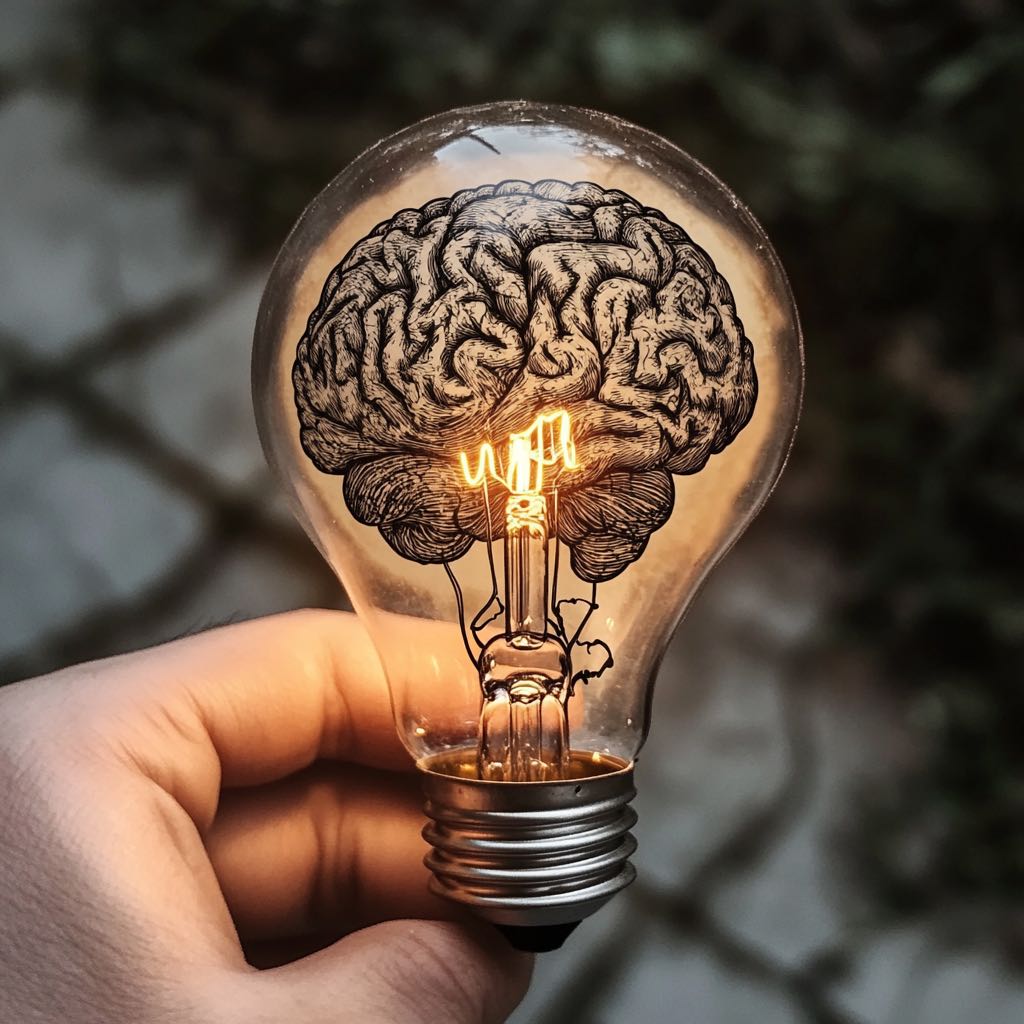1. Introduction to Patent Law
1.1 Historical Development of Patent Law in the United States
The history of patent law in the United States traces back to colonial times, when individual colonies granted patent rights to inventors. The first colonial patent was granted by Massachusetts in 1641. After the American Revolution, the need for a unified patent system became apparent as the young nation sought to encourage innovation and industrial development. The Patent Act of 1790, signed by President George Washington, established the first federal patent system. Under this act, patents were examined by a committee consisting of the Secretary of State, Secretary of War, and Attorney General.
The Patent Act of 1793, championed by Thomas Jefferson, simplified the system by making it a registration system rather than an examination system. However, this led to numerous conflicting patents and litigation. The Patent Act of 1836 created the Patent Office and reinstated the examination system, establishing many fundamental features of modern patent law. This act also introduced the requirement for detailed claims and established a library of prior art.
The 20th century brought significant developments, including the Patent Act of 1952, which codified much of modern patent law and established the non-obviousness requirement. Recent developments include the America Invents Act of 2011, which transformed the U.S. patent system from a “first-to-invent” to a “first-inventor-to-file” system, aligning American patent law more closely with international standards.
1.2 Constitutional Basis
The foundation of U.S. patent law rests in Article I, Section 8, Clause 8 of the Constitution, which grants Congress the power “to promote the Progress of Science and useful Arts, by securing for limited Times to Authors and Inventors the exclusive Right to their respective Writings and Discoveries.” This clause, known as the Intellectual Property Clause or the Progress Clause, serves dual purposes: it both empowers and limits Congress’s authority in patent matters.
The constitutional basis establishes several key principles. First, patent rights must be limited in duration, preventing perpetual monopolies. Second, patents must promote progress, suggesting that they should benefit society rather than merely reward inventors. Third, patents must be granted to actual inventors, not merely discoverers of existing phenomena. These constitutional principles continue to guide courts and legislators in shaping patent law.
1.3 Purpose and Goals of the Patent System
The patent system serves multiple interconnected purposes in modern society. Its primary goal is to promote innovation by providing inventors with temporary exclusive rights to their inventions in exchange for public disclosure. This “patent bargain” ensures that society benefits from both the invention itself and the knowledge of how to make and use it.
The system encourages innovation by allowing inventors to recoup their research and development investments through commercialization or licensing of their patents. Without patent protection, inventors might rely on trade secrets, depriving society of valuable knowledge. The system also facilitates technology transfer by creating clearly defined property rights that can be bought, sold, and licensed.
Furthermore, the patent system promotes economic efficiency by preventing duplicative research efforts and enabling inventors to build upon each other’s work. The public disclosure requirement creates a vast repository of technical information that advances the state of the art and prevents the reinvention of existing solutions.
1.4 Overview of the United States Patent and Trademark Office (USPTO)
The United States Patent and Trademark Office operates as an agency within the Department of Commerce. As a fee-funded agency, it operates without tax dollars, supporting itself through various filing, maintenance, and service fees. The USPTO employs thousands of patent examiners, each specialized in specific technical fields, to review patent applications and determine whether they meet the requirements for patentability.
The USPTO’s responsibilities extend beyond mere patent examination. The agency develops patent policy, provides guidance to patent applicants and practitioners, maintains public records of patents and patent applications, and represents the United States in international intellectual property matters. The agency also operates the Patent Trial and Appeal Board (PTAB), which handles appeals of examiner decisions and conducts various post-grant proceedings.
2. Types of Patents
2.1 Utility Patents
Utility patents, the most common type of patent, protect new and useful processes, machines, manufactures, and compositions of matter, as well as new and useful improvements thereof. These patents cover the functional aspects of inventions rather than their ornamental design. Utility patents provide protection for 20 years from the filing date of the application, subject to payment of maintenance fees.
Utility patents encompass a vast range of inventions, from simple mechanical devices to complex pharmaceutical compounds and computer software. The scope of protection is defined by the patent’s claims, which must particularly point out and distinctly claim the subject matter the inventor considers as the invention. Utility patents require extensive technical disclosure, including a detailed description of how to make and use the invention.
2.2 Design Patents
Design patents protect new, original, and ornamental designs for articles of manufacture. Unlike utility patents, design patents cover the way an article looks rather than the way it works. Design patents last for 15 years from the grant date and do not require maintenance fees. They are particularly valuable in industries where product appearance significantly influences consumer choice, such as furniture, consumer electronics, and fashion accessories.
Design patents contain a single claim and rely heavily on drawings to define the protected design. The test for design patent infringement considers whether an ordinary observer would find the accused design substantially similar to the patented design, taking into account the prior art. Design patents can provide powerful protection against copying, as demonstrated by high-profile cases in the smartphone industry.
2.3 Plant Patents
Plant patents protect distinct and new varieties of asexually reproduced plants, including cultivated sports, mutants, hybrids, and newly found seedlings, other than tuber-propagated plants or plants found in an uncultivated state. Plant patents grant the right to exclude others from asexually reproducing the plant or selling or using any plants so reproduced.
Plant patents serve the specialized needs of the agricultural and horticultural industries. They require detailed botanical descriptions and drawings, and the application must explain the characteristics that distinguish the new variety from existing varieties. Plant patents last for 20 years from the filing date and do not require maintenance fees.
2.4 Provisional vs. Non-provisional Applications
The patent system offers two types of initial patent applications: provisional and non-provisional. Provisional applications provide a simplified filing option that establishes an early filing date for an invention. They require less formal documentation than non-provisional applications and are not examined for patentability. Provisional applications expire after 12 months unless a corresponding non-provisional application is filed.
Non-provisional applications represent the traditional patent application pathway. They require formal claims, detailed drawings, and a complete description of the invention that satisfies all statutory requirements. While provisional applications can provide valuable strategic benefits, including additional time to develop the invention and reduced initial costs, they must be converted to non-provisional applications to obtain patent protection.
3. Patent Requirements
3.1 Patentable Subject Matter
Patent law establishes fundamental categories of subject matter eligible for patent protection: processes, machines, manufactures, and compositions of matter. However, these categories are subject to important judicial exceptions. Laws of nature, natural phenomena, and abstract ideas are not patentable. The Supreme Court has refined these exceptions through landmark decisions, particularly in the contexts of software, business methods, and biotechnology.
Recent jurisprudence has particularly focused on patent eligibility in the software and biotechnology fields. Courts have struggled to define clear boundaries between abstract ideas and patentable applications, leading to ongoing debate about the scope of patent-eligible subject matter. The USPTO periodically issues guidance to help examiners and practitioners navigate these complex determinations.
3.2 Novelty Requirements
The novelty requirement demands that an invention be new compared to the prior art. Prior art includes all information available to the public before the effective filing date of the patent application. This encompasses previous patents, published patent applications, printed publications, public uses, sales, and other public disclosures anywhere in the world.
The America Invents Act significantly modified the novelty analysis by adopting a first-inventor-to-file system. Under this system, the critical date for determining novelty is the effective filing date of the patent application, rather than the date of invention. The act also expanded the geographical scope of prior art and eliminated certain grace periods previously available to inventors.
3.3 Non-obviousness Standards
The non-obviousness requirement presents perhaps the most challenging hurdle in patent law. An invention must not have been obvious to a person having ordinary skill in the art at the time of the invention. This determination requires consideration of the scope and content of the prior art, the differences between the prior art and the claimed invention, and the level of ordinary skill in the pertinent art.
Courts have developed various frameworks for analyzing non-obviousness, including consideration of secondary factors such as commercial success, long-felt but unsolved needs, and failure of others. The Supreme Court’s decision in KSR v. Teleflex refined the non-obviousness analysis by rejecting rigid application of the “teaching, suggestion, or motivation” test and emphasizing the role of common sense and ordinary creativity.
3.4 Utility Requirement
The utility requirement mandates that an invention be useful and provide some identifiable benefit. This requirement typically presents a low barrier, as courts have held that an invention need only provide some minimal utility to satisfy the requirement. However, the utility must be specific, substantial, and credible.
Utility takes on particular importance in certain fields, such as chemistry and biotechnology, where inventors sometimes seek patents on compounds or sequences with speculative or unproven uses. The USPTO has developed specific utility guidelines for these fields, requiring that claimed utilities be practical and currently available rather than requiring further research to identify.
3.5 Enablement and Written Description Requirements
The enablement requirement ensures that the patent document teaches those skilled in the art how to make and use the invention without undue experimentation. This requirement serves the patent system’s goal of technological disclosure by ensuring that the public receives meaningful teaching in exchange for the patent grant.
The written description requirement, distinct from enablement, demands that the patent specification demonstrate that the inventor possessed the claimed invention at the time of filing. This requirement prevents inventors from claiming more broadly than their actual contribution to the field. Both requirements are assessed from the perspective of a person having ordinary skill in the art, and their application varies depending on the complexity and predictability of the technology involved.
4. Patent Application Process
4.1 Pre-filing Considerations
Before filing a patent application, inventors must carefully evaluate several crucial factors. A comprehensive prior art search helps assess the invention’s patentability and shapes the application strategy. Inventors must also consider whether to file provisional or non-provisional applications, and whether to seek international protection. Timing considerations are critical, particularly regarding public disclosures or commercial activities that might impact patentability.
Documentation of the invention process, including dated laboratory notebooks and invention records, remains valuable even under the first-inventor-to-file system. Inventors must also determine whether they qualify for small entity or micro entity status, which can significantly reduce USPTO fees. Additionally, careful consideration must be given to inventorship determination, as improper inventorship can invalidate a patent.
4.2 Patent Search and Prior Art
A thorough patent search involves examining multiple sources of prior art, including issued patents, published applications, technical literature, and commercial products. The search should cover not only the specific technology but also related fields where similar solutions might exist. Professional searchers often employ sophisticated classification systems and search strategies to identify relevant prior art.
The search results inform various strategic decisions, such as whether to proceed with the application, how broadly to claim the invention, and how to distinguish the invention from prior art. A well-documented search also helps patent practitioners draft applications that anticipate and address potential objections, potentially expediting prosecution.
4.3 Application Components
A non-provisional patent application consists of several essential components. The specification provides a detailed written description of the invention, including background information, summary, and detailed description of preferred embodiments. The claims define the legal scope of protection sought. Drawings illustrate the invention, with formal requirements varying depending on the technology.
The application must include an abstract summarizing the technical disclosure, and an oath or declaration from the inventors. Each component must meet specific formal requirements established by statute and USPTO rules. The specification must provide adequate support for the claims and enable one skilled in the art to make and use the invention.
4.4 Filing Procedures
Filing procedures involve careful attention to USPTO requirements and deadlines. Electronic filing has become standard, though paper filing remains available. The filing process includes submission of application documents, payment of required fees, and compliance with formal requirements such as margin sizes and page numbering.
Applications must be submitted in English or accompanied by an English translation. For applications claiming priority to earlier applications, specific deadlines must be met and priority documents submitted. Failure to comply with filing requirements can result in abandonment or loss of rights.
4.5 Patent Prosecution
Patent prosecution encompasses the interaction between patent applicants and the USPTO following application filing. After initial processing, applications are assigned to art units based on technology classification. Patent examiners review applications for compliance with all statutory requirements and conduct prior art searches.
Prosecution typically involves multiple rounds of office actions and responses. Examiners issue office actions identifying deficiencies or rejections, and applicants respond with arguments or amendments. The process requires careful strategy to achieve the broadest possible protection while moving efficiently toward allowance.
4.6 Office Actions and Responses
Office actions may raise various issues, including rejections based on prior art, enablement concerns, or formal matters. Responses must address all raised issues and may include claim amendments, arguments, evidence of non-obviousness, or declarations from experts. Strategic decisions must be made regarding which arguments to pursue and when to appeal adverse decisions.
Responses must be filed within statutory deadlines, though extensions of time are available for a fee. Interviews with examiners can be valuable tools for advancing prosecution, allowing direct discussion of issues and potential resolutions. Careful documentation of interviews and agreements is essential.
4.7 Appeals Process
When examiner rejections cannot be overcome through normal prosecution, applicants may appeal to the Patent Trial and Appeal Board (PTAB). The appeal process begins with a notice of appeal and includes filing an appeal brief detailing the grounds for appeal. The examiner responds with an answer, and appellants may file a reply brief.
PTAB decisions may be further appealed to the Court of Appeals for the Federal Circuit. The appeals process requires careful consideration of costs, timing, and likelihood of success. Alternative strategies, such as continuing applications or requests for continued examination, may be more appropriate in some cases.
5. Patent Rights and Enforcement
5.1 Duration of Patent Protection
Patent term varies by patent type. Utility and plant patents expire 20 years from the earliest claimed filing date, subject to possible adjustments for USPTO delays or regulatory review. Design patents expire 15 years from grant. Patent term adjustment compensates for certain USPTO delays during prosecution, while patent term extension may be available for products requiring regulatory approval.
Maintenance fees must be paid at specified intervals to maintain utility patents in force. Failure to pay maintenance fees results in expiration, though revival may be possible in some circumstances. Strategic decisions regarding maintenance fee payment should consider the patent’s continuing value and market conditions.
5.2 Territorial Scope
Patents provide rights only within the territory of the issuing authority. U.S. patents provide protection within U.S. territories and possessions but not abroad. Activities conducted entirely outside the U.S. generally do not infringe U.S. patents, though importing products made by patented processes may constitute infringement.
International protection requires obtaining patents in each country of interest, subject to various treaties facilitating multi-jurisdictional filing. The timing and selection of countries for foreign filing involve complex strategic and economic considerations.
5.3 Rights Granted to Patent Holders
Patent holders receive the right to exclude others from making, using, selling, offering for sale, or importing the patented invention. These rights do not necessarily include the right to practice the invention, as doing so might infringe others’ patents. Patents may be licensed, assigned, or used as collateral.
The scope of patent rights is defined by the claims, interpreted in light of the specification, prosecution history, and relevant legal doctrines. Various doctrines, such as the doctrine of equivalents, may expand protection beyond literal claim scope.
5.4 Patent Infringement
Patent infringement occurs when someone makes, uses, sells, offers to sell, or imports the patented invention without authorization. Direct infringement requires all claim elements to be present in the accused product or process. Indirect infringement theories, including contributory infringement and inducement, address activities that facilitate direct infringement by others.
Infringement analysis involves two steps: claim construction, where the meaning and scope of the claims are determined, and comparison of the properly construed claims to the accused product or process. Various defenses may be available to accused infringers.
5.5 Defenses to Patent Infringement
Common defenses include non-infringement, invalidity, unenforceability, and various equitable defenses. Invalidity challenges may be based on prior art, inadequate disclosure, or other statutory requirements. Inequitable conduct before the USPTO may render patents unenforceable. Other defenses include experimental use, prior use rights, and exhaustion of patent rights.
Challenges to patent validity may be raised in litigation or through various USPTO post-grant proceedings. The choice of forum and timing of challenges involves strategic considerations including cost, speed, and likelihood of success.
5.6 Remedies and Damages
Available remedies include injunctive relief and monetary damages. Permanent injunctions are not automatic but require consideration of equitable factors. Damages may include lost profits or reasonable royalties, and may be enhanced for willful infringement. Courts may also award attorney fees in exceptional cases.
The calculation of damages often involves complex economic analysis and expert testimony. Various factors influence the determination of reasonable royalty rates, including industry practices and the relative contribution of the patented technology.
6. Special Topics in Patent Law
6.1 International Patent Protection
International patent protection involves navigating multiple legal systems and treaty obligations. The Paris Convention provides a priority right, allowing applicants to file corresponding applications in member countries within twelve months of the first filing. The Patent Cooperation Treaty (PCT) facilitates international filing through a unified application process.
Regional patent systems, such as the European Patent Office, provide centralized examination though patents must still be validated in individual member countries. Harmonization efforts continue to reduce differences between national patent systems, though significant variations remain.
6.2 Patent Cooperation Treaty (PCT)
The PCT system provides a unified procedure for filing patent applications in member countries. A single international application establishes a filing date in all member countries. The international phase includes a search and optional preliminary examination, providing valuable information before entering national phases.
Strategic use of the PCT system can defer costs while maintaining filing options in multiple countries. The system also provides additional time for market assessment and product development before committing to specific countries.
6.3 Standard Essential Patents
Standard essential patents (SEPs) claim inventions necessary to implement technical standards. SEP holders typically commit to license these patents on fair, reasonable, and non-discriminatory (FRAND) terms. The interpretation and enforcement of FRAND commitments has generated significant litigation and policy debate.
SEPs raise unique issues regarding valuation, licensing, and enforcement. Courts and regulatory authorities continue to develop frameworks for addressing these issues, particularly in the context of mobile telecommunications and other standardized technologies.
6.4 Software and Business Method Patents
Software and business method patents present ongoing challenges regarding patent eligibility and scope of protection. Courts have struggled to distinguish between abstract ideas and patent-eligible applications of those ideas. The evolution of case law has created uncertainty regarding the patentability of various computer-implemented innovations.
Successful software patent applications require careful attention to technical implementation details and practical applications. The specification should emphasize technical improvements and advantages over conventional approaches.
6.5 Pharmaceutical Patents and Hatch-Waxman Act
The pharmaceutical industry relies heavily on patent protection to recoup research and development investments. The Hatch-Waxman Act established a complex regulatory framework balancing innovator and generic drug interests. The act provides patent term extensions for regulatory delays and establishes procedures for challenging drug patents.
Special considerations apply to pharmaceutical patent prosecution and enforcement. Multiple patents often protect different aspects of drugs, including compounds, formulations, and methods of treatment. Patent strategies must account for regulatory requirements and potential generic competition.
6.6 University Patents and Bayh-Dole Act
The Bayh-Dole Act allows universities to retain patent rights in federally funded inventions. This legislation has significantly influenced university research and technology transfer practices. Universities must comply with various requirements regarding invention disclosure, government rights, and preferences for U.S. industry.
University patent programs face unique challenges balancing academic and commercial interests. Technology transfer offices play crucial roles in identifying, protecting, and commercializing university innovations. Successful programs require effective collaboration between researchers, administrators, and industry partners.
7. Patent Portfolio Management
7.1 Strategic Patent Filing
Strategic patent filing requires a comprehensive approach that aligns intellectual property protection with business objectives. Organizations must consider market opportunities, competitor activities, and technological trends when developing filing strategies. This involves identifying key innovations, determining appropriate geographical coverage, and deciding on the timing and scope of patent applications.
Portfolio development often employs various filing strategies, including continuation applications to maintain pending claims, divisional applications to pursue different aspects of an invention, and continuation-in-part applications to add new matter. Organizations must balance the costs of broad patent coverage against business value and enforcement possibilities.
7.2 Patent Maintenance
Effective patent maintenance involves more than paying maintenance fees. Organizations must regularly evaluate their patent portfolios to ensure alignment with current business objectives. This includes assessing the continued relevance of patented technologies, identifying licensing opportunities, and determining whether to maintain, abandon, or sell patents.
Portfolio reviews should consider factors such as technology evolution, market conditions, and competitive positions. Regular audits help identify gaps in protection, opportunities for monetization, and potential cost savings through strategic abandonment of less valuable patents.
7.3 Licensing and Commercialization
Patent licensing represents a crucial aspect of portfolio monetization. Successful licensing programs require careful consideration of potential licensees, market conditions, and competing technologies. License agreements must address various issues including scope, territory, exclusivity, royalties, and termination provisions.
Commercialization strategies may involve direct exploitation, licensing, or strategic partnerships. Organizations must consider factors such as manufacturing capabilities, market access, and regulatory requirements when determining commercialization approaches. Patent pools and standards organizations can facilitate commercialization of certain technologies.
7.4 Patent Valuation
Patent valuation involves multiple approaches including cost-based, market-based, and income-based methods. Valuations consider factors such as remaining patent term, claim scope, validity strength, enforceability, and market conditions. Different valuation methods may be appropriate for different purposes such as licensing, sale, or litigation.
Accurate valuation requires understanding both technical and market factors. Technical analysis considers the patent’s scope and strength, while market analysis examines commercial potential and competitive landscape. Valuation may also consider portfolio synergies and strategic value beyond direct revenue potential.
7.5 Patent Analytics and Metrics
Patent analytics provide insights into technological trends, competitive positions, and portfolio strength. Analytics may examine filing patterns, citation networks, claim scope, and technological coverage. Advanced techniques including machine learning can identify emerging technologies and potential licensing targets.
Metrics help organizations evaluate portfolio performance and guide strategy. Key metrics might include filing costs, maintenance costs, revenue generation, and strategic value indicators. Regular analysis helps organizations optimize their patent portfolios and identify opportunities for improvement.
8. Current Issues and Future Developments
8.1 Patent Reform Initiatives
Patent reform continues to evolve through legislative, judicial, and administrative actions. Current initiatives focus on improving patent quality, reducing litigation costs, and addressing abusive practices. Proposed reforms address issues such as subject matter eligibility, innovation protection in emerging technologies, and international harmonization.
Stakeholders debate various reform proposals including changes to post-grant proceedings, fee structures, and examination procedures. Reform efforts must balance competing interests including promoting innovation, ensuring patent quality, and maintaining system efficiency.
8.2 Impact of Artificial Intelligence on Patent Law
Artificial intelligence presents multiple challenges for patent law. Questions arise regarding AI inventorship, as current law requires human inventors. Patent offices must address how to examine AI-related inventions and determine appropriate disclosure requirements for AI systems.
AI also impacts patent office operations through automated search tools and examination assistance. Future developments may include AI-assisted prior art searching, automated claim analysis, and predictive analytics for prosecution strategies.
8.3 Emerging Technologies and Patent Challenges
Emerging technologies such as biotechnology, nanotechnology, and quantum computing present unique patenting challenges. These fields often involve complex scientific principles and unpredictable results, complicating enablement and written description requirements. Patent offices must develop examination guidelines appropriate for these technologies.
Subject matter eligibility remains particularly challenging for emerging technologies. Courts and patent offices continue to refine the boundaries between abstract ideas and patent-eligible applications. International differences in patentability standards create additional complications.
8.4 Global Patent Harmonization Efforts
International efforts continue toward patent system harmonization. Initiatives address substantive patent law, examination procedures, and administrative requirements. Progress occurs through multilateral agreements, bilateral cooperation, and patent office partnerships.
Harmonization faces challenges including different national interests, varying legal traditions, and administrative complexities. Recent efforts focus on practical improvements such as work sharing between patent offices and standardized electronic filing systems.
8.5 Patent Quality and Examination Reforms
Patent offices worldwide implement various initiatives to improve patent quality and examination efficiency. Reforms include enhanced examiner training, improved prior art access, and quality monitoring programs. Some offices experiment with specialized examination tracks for different technologies or applicant types.
Stakeholders debate various proposals for examination reform including deferred examination, outsourced searching, and increased third-party participation. Changes must balance examination thoroughness against speed and cost considerations.
9. Practical Considerations
9.1 Working with Patent Attorneys
Effective collaboration with patent attorneys requires clear communication and understanding of roles. Inventors should provide comprehensive technical disclosures while attorneys contribute legal expertise and strategic guidance. Regular communication helps ensure alignment of prosecution strategy with business objectives.
Attorneys must maintain current knowledge of legal developments and technical fields. Selection of patent counsel should consider expertise in relevant technology areas, prosecution experience, and understanding of client business needs.
9.2 Cost Considerations
Patent costs include attorney fees, filing fees, prosecution costs, and maintenance fees. Strategic decisions throughout the patent process impact total costs. Organizations must consider cost-benefit tradeoffs regarding filing scope, geographical coverage, and prosecution strategies.
Cost management strategies include careful selection of filing jurisdictions, use of provisional applications, and strategic abandonment of less valuable patents. Various USPTO programs offer reduced fees for qualifying entities.
9.3 Small Entity and Micro Entity Status
Small entity and micro entity status provide significant USPTO fee reductions. Qualification requirements include size and income limitations. Entities must carefully monitor continued eligibility as changes in status can affect fee obligations and patent validity.
Proper entity status claims require attention to complex ownership and licensing relationships. Organizations must maintain documentation supporting entity status claims and promptly update status when circumstances change.
9.4 Patent Term Adjustments and Extensions
Patent term adjustments compensate for certain USPTO delays during prosecution. Complex rules govern adjustment calculation and procedures for requesting corrections. Strategic prosecution decisions can impact adjustment eligibility.
Patent term extensions may be available for products requiring regulatory approval. Extension requests involve strict deadlines and documentation requirements. Organizations must coordinate patent and regulatory strategies to maximize protection periods.
9.5 Best Practices for Inventors and Companies
Successful patent protection requires systematic approaches to invention identification, documentation, and protection. Best practices include maintaining detailed laboratory notebooks, implementing invention disclosure programs, and establishing clear intellectual property policies.
Organizations should develop clear procedures for invention evaluation, patent filing decisions, and portfolio management. Regular training helps ensure understanding of patent processes and obligations among technical staff.
10. Resources and References
10.1 USPTO Resources
The USPTO provides extensive resources including examination guidelines, fee schedules, and filing instructions. Online systems facilitate application filing, status monitoring, and fee payment. The USPTO website offers various search tools and educational materials.
Regular USPTO communications provide updates on law changes, procedural requirements, and office initiatives. Understanding and utilizing available resources helps optimize interaction with the patent office.
10.2 Legal Research Tools
Various commercial and public databases provide access to patent documents, legal decisions, and analytical tools. Research platforms offer different features and coverage levels. Selection of appropriate tools depends on specific research needs and budget considerations.
Effective legal research requires understanding of patent classification systems, search strategies, and legal precedent analysis. Regular monitoring of legal developments helps maintain current knowledge.
10.3 Professional Organizations
Professional organizations provide networking opportunities, continuing education, and policy advocacy. Organizations serve various stakeholder groups including patent attorneys, inventors, and industry representatives. Participation provides valuable information exchange and professional development opportunities.
Organizations often contribute to policy discussions and practice development through committees, publications, and conferences. Active participation helps professionals stay current with developments in patent law and practice.
10.4 Educational Resources
Various institutions offer patent-related education ranging from basic inventor training to advanced legal programs. Online resources include webinars, tutorials, and practice materials. Educational programs should align with individual needs and experience levels.
Continuing education helps professionals maintain expertise and adapt to changing requirements. Organizations should support ongoing professional development through training programs and resource access.
10.5 Important Case Law References
Key court decisions shape patent law interpretation and application. Understanding significant cases helps practitioners navigate legal requirements and anticipate future developments. Regular review of new decisions helps maintain current legal knowledge.
Case law research requires attention to jurisdictional differences and precedential value. Practitioners must understand how different courts interpret and apply patent law principles.






